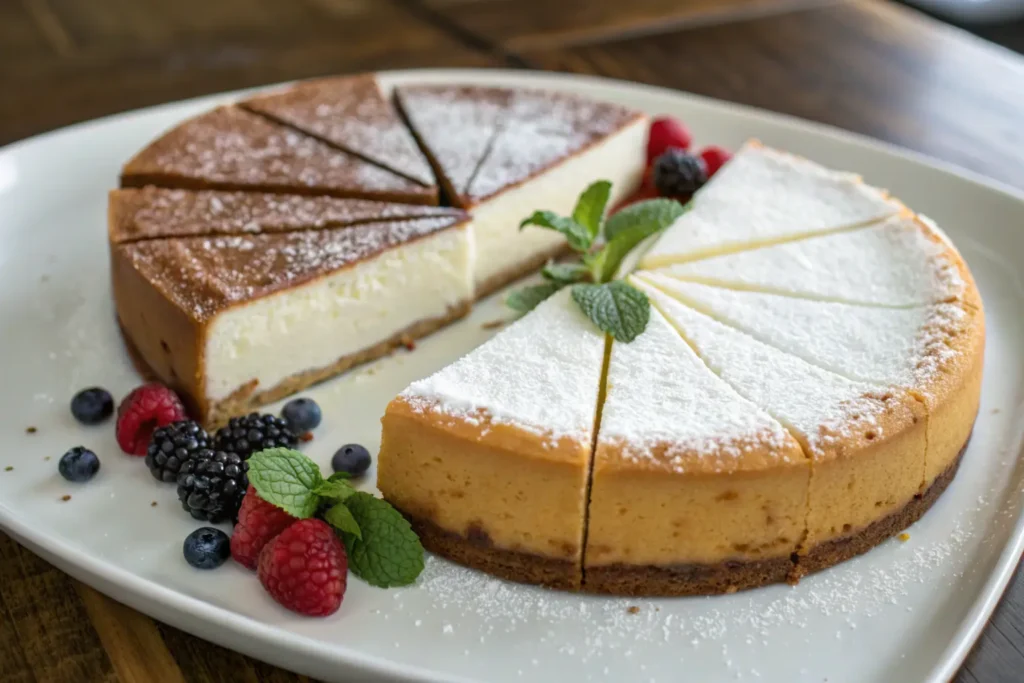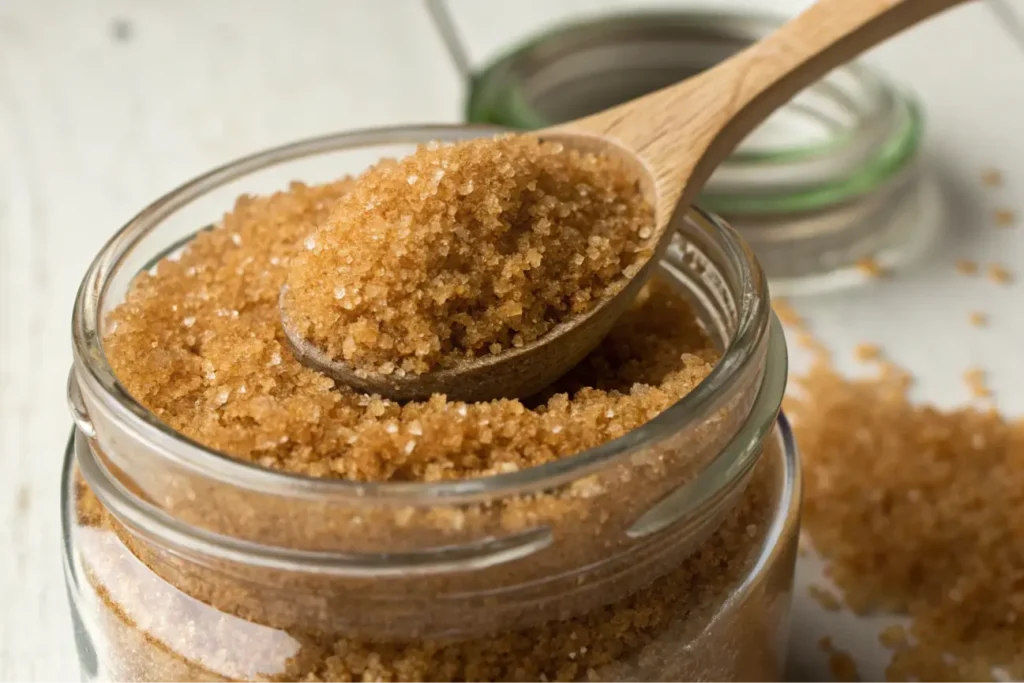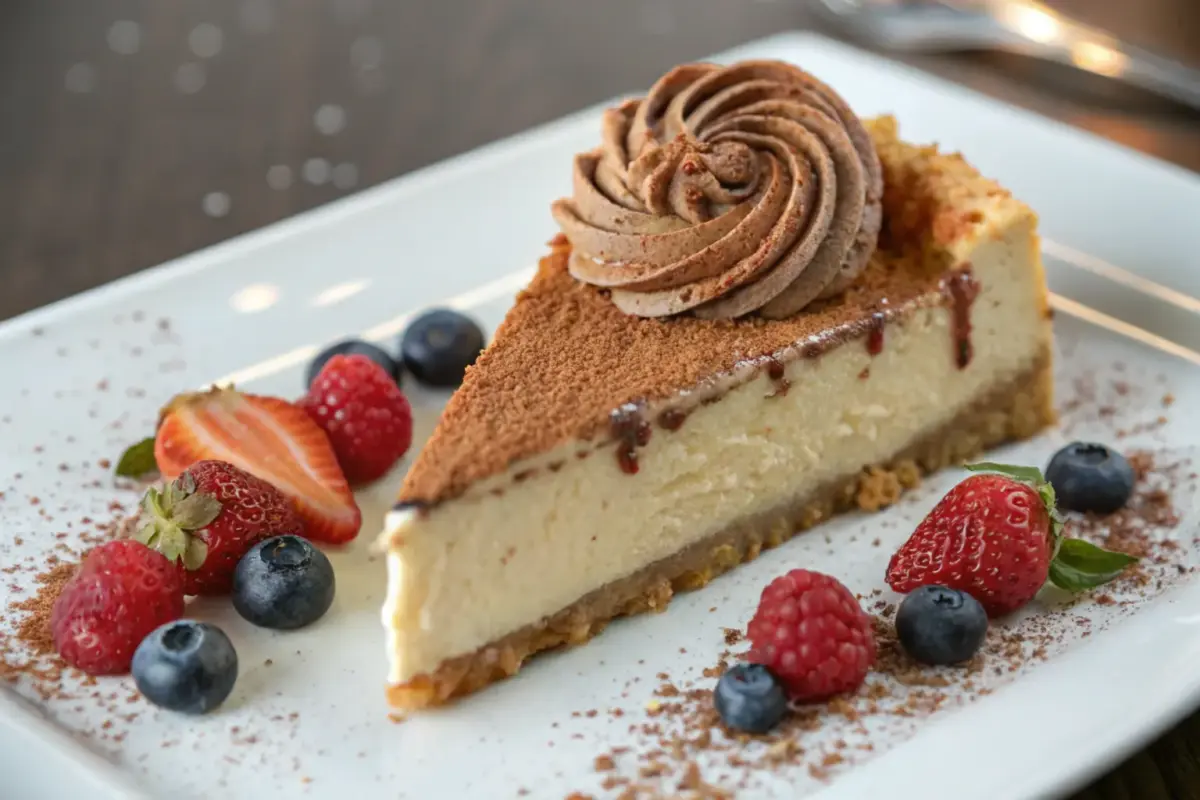Introduction to Cheesecake Sweeteners
Cheesecake is cherished for its luscious flavor and creamy consistency, with sugar playing a crucial role in achieving its signature balance. But can brown sugar replace traditional white sugar in this beloved dessert? Brown sugar’s distinct flavor and texture present an intriguing alternative, yet its influence on the cheesecake’s overall result warrants careful thought.
Sugar in cheesecake is more than a sweetener—it impacts the texture, moisture, and even the visual appeal of the baked surface. With its molasses content, brown sugar introduces a layer of complexity that can enhance certain variations. Whether it’s a spiced, nutty, or chocolate-infused cheesecake, this alternative sweetener opens up exciting possibilities for creative bakers.
In this guide, we’ll delve into the role of brown sugar in cheesecake, uncover its unique flavor contributions, and provide tips for incorporating it effectively. With the right approach, you can harness brown sugar’s potential to craft a cheesecake that’s rich, flavorful, and distinct while preserving its classic appeal.
What Is Brown Sugar?
Before diving deeper into is it okay to use brown sugar in cheesecake, let’s define brown sugar. Unlike white sugar, which is fully refined, brown sugar retains molasses, giving it a unique flavor and moist texture. This distinction makes it an interesting choice for baking, including cheesecake recipes.
Brown sugar comes in two primary varieties:
- Light brown sugar: Contains a milder molasses flavor.
- Dark brown sugar: Offers a more robust, caramel-like taste.
The molasses content not only influences flavor but also adds moisture to recipes. This characteristic makes brown sugar a versatile ingredient, but it also requires adjustments in some baking methods to maintain balance.
The Role of Sugar in Cheesecake Recipes
Sugar does more than sweeten, it influences the structure, moisture, and browning of cheesecake. Brown sugar, with its distinct caramel notes, can transform traditional flavors, making it ideal for recipes that incorporate spices or chocolate. If you’re exploring variations, such as this Churro Cheesecake, brown sugar might be a game-changer.
Key Functions of Sugar in Cheesecake:
- Sweetening: Balances the tangy flavor of cream cheese.
- Texture: Helps achieve a creamy and smooth consistency.
- Caramelization: Enhances the visual appeal of the baked surface.
- Moisture retention: Keeps the cheesecake tender and prevents dryness.
Using brown sugar in cheesecake can influence these elements. Its molasses content adds a layer of complexity to the flavor while affecting the cake’s overall texture. Knowing these impacts can guide you in making the best choice for your recipe.
Can Brown Sugar Be Used in Cheesecake?
One of the most common baking questions is, is it okay to use brown sugar in cheesecake? The answer is yes, but with some considerations. Brown sugar can be substituted for white sugar in cheesecake recipes, but it will alter the final result in noticeable ways.
Things to Consider:
- Flavor profile: Brown sugar brings a caramel-like richness that complements certain cheesecake variations, such as spiced or chocolate-based recipes.
- Texture changes: Due to its higher moisture content, brown sugar may produce a denser or creamier texture.
- Mixing requirements: Proper blending is essential to avoid a gritty consistency.
Brown sugar works best in recipes where its unique flavor can shine, especially when paired with warm spices or nuts. However, for traditional cheesecake, the substitution may require slight adjustments to preserve the intended taste and texture.
Flavor Impacts of Brown Sugar in Cheesecake
A critical aspect of answering is it okay to use brown sugar in cheesecake lies in its impact on flavor. Brown sugar’s molasses content creates a deeper, more complex sweetness compared to the neutral profile of white sugar.
Flavor Benefits of Using Brown Sugar:
- Adds a warm, toffee-like richness.
- Pairs beautifully with ingredients like cinnamon, chocolate, or caramel.
- Provides a subtle earthiness that enhances the overall dessert.
However, this robust flavor can overshadow more delicate cheesecake elements, such as citrus or vanilla. To maintain balance, it’s essential to pair brown sugar with ingredients that complement its unique characteristics.
Brown Sugar vs. White Sugar in Cheesecake

Brown sugar differs from white sugar in sweetness and moisture content. Its higher molasses content gives it a richer, more complex taste, which pairs well with warm spices. However, this can also result in a denser texture. For ideas on how these differences play out, take a look at this guide on What is Churro Cheesecake Made Of, which highlights how different sugars impact flavor profiles.
When to Use Each:
Brown Sugar: Ideal for spiced, nutty, or chocolate-based desserts. For instance, it complements recipes such as Mexican Cheesecake, where a bold caramel undertone shines.
White Sugar: Best for traditional recipes like a vanilla cheesecake.
Key Differences:
- Sweetness: White sugar offers a cleaner, more straightforward sweetness, while brown sugar provides a deeper flavor.
- Moisture: Brown sugar’s higher moisture content can result in a denser cheesecake.
- Batter consistency: White sugar dissolves more quickly, making it easier to achieve a smooth texture.
The choice depends on the desired flavor and the type of cheesecake you’re making.
Types of Brown Sugar for Cheesecake

If you’ve decided the answer to is it okay to use brown sugar in cheesecake is yes, it’s important to select the right type. Not all brown sugars are the same, and each variety brings different qualities to your recipe.
Common Types:
- Light brown sugar: Adds a subtle molasses flavor, suitable for delicate cheesecake variations.
- Dark brown sugar: Offers bold, caramelized notes, ideal for rich or spiced cheesecakes.
- Specialty sugars: Turbinado and demerara, with their coarse texture, are better suited for crusts rather than batter.
Choosing the right type of brown sugar depends on the flavor and texture you want to achieve. Light brown sugar works well for subtle tweaks, while dark brown sugar is perfect for dramatic flavor enhancements.
Substitution Ratios for Brown Sugar
The question “Is it okay to use brown sugar in cheesecake?” often hinges on understanding proper substitution ratios. Brown sugar, with its molasses content, provides a richer, deeper flavor than white sugar, but the swap isn’t always one-size-fits-all.
- Replace white sugar with brown sugar at a 1:1 ratio for a straightforward flavor boost.
- For a subtle molasses note, use half brown sugar and half white sugar.
- For bold caramel-like undertones, dark brown sugar is the ideal choice.
Because brown sugar adds moisture, adjust liquid ingredients slightly to maintain the cheesecake’s structure. Reducing cream or sour cream by one to two tablespoons can prevent a softer texture.
Popular Cheesecake Variations with Brown Sugar
If you’re wondering “Is it okay to use brown sugar in cheesecake?”, know that many popular variations already incorporate this ingredient for added depth.
- Classic Cheesecake: Brown sugar enhances the richness without altering the signature creamy base.
- Pumpkin Cheesecake: The molasses flavor pairs beautifully with warm spices like cinnamon and nutmeg.
- Caramel Cheesecake: A perfect match for caramel sauces or glazes, amplifying the indulgent taste.
- Apple Cheesecake: Complements the natural tartness of apples for a balanced dessert.
Brown sugar not only deepens the flavor but also gives a warm golden hue to the filling, adding to its visual appeal.
Adjusting the Crust When Using Brown Sugar
In discussions of “Is it okay to use brown sugar in cheesecake?”, bakers often overlook how it impacts the crust. Substituting brown sugar for granulated sugar in the crust requires minor adjustments.
Key considerations:
- Brown sugar’s molasses content adds moisture, so reduce butter slightly to maintain a crumbly texture.
- Dark brown sugar works exceptionally well for graham cracker or shortbread crusts, providing a richer base.
- Mix thoroughly to prevent clumps, ensuring an even distribution of sweetness.
The result is a crust with a caramel-like essence that perfectly complements the creamy filling.
Troubleshooting Brown Sugar Cheesecake Issues
For those concerned about “Is it okay to use brown sugar in cheesecake?”, troubleshooting common issues can make your baking experience smoother. Brown sugar’s unique properties occasionally require small tweaks.
Common challenges and solutions:
- Moist Texture: The added moisture may soften the cheesecake. Reduce the liquid ingredients slightly to achieve the desired firmness.
- Sweetness Clumping: Brown sugar can clump, leading to uneven sweetness. Sift it before mixing to ensure a smooth batter.
- Quick Browning: Molasses content may cause faster browning. Cover the cheesecake with foil midway through baking to prevent over-browning.
With these adjustments, incorporating brown sugar becomes a seamless process.
Expert Tips for Perfect Brown Sugar Cheesecake
When exploring “Is it okay to use brown sugar in cheesecake?”, a few expert tips can elevate your baking:
- Room Temperature Ingredients: Ensure cream cheese and eggs are at room temperature for a smooth, lump-free batter.
- Proper Mixing: Beat the cream cheese and sugar together thoroughly to dissolve granules and achieve the desired texture.
- Gradual Cooling: After baking, let your cheesecake cool gradually in the oven to avoid cracks, a common issue with moist batters.
These steps help create a dessert that highlights brown sugar’s unique flavor without compromising on texture or structure.
Brown Sugar Alternatives for Cheesecake
For those still debating “Is it okay to use brown sugar in cheesecake?”, considering alternatives can provide additional options.
- Coconut Sugar: Mimics brown sugar’s molasses notes while offering a subtle nutty flavor.
- Maple Sugar: Adds a gentle sweetness with a hint of maple, ideal for autumnal recipes.
- Turbinado Sugar: Retains some molasses for a mild caramel taste, offering a lighter option.
Each alternative has its own flavor profile, providing flexibility in creating the perfect cheesecake.
FAQs
1. Does brown sugar change the texture of cheesecake?
Brown sugar adds moisture due to its molasses content. This can result in a softer texture if not balanced with adjustments. Reducing liquid ingredients such as cream or sour cream by one to two tablespoons will help maintain the cheesecake’s structure.
2. Can I substitute brown sugar for white sugar in cheesecake?
Absolutely! You can replace white sugar with brown sugar in a 1:1 ratio. For a milder flavor, mix equal parts of white and brown sugar. If you prefer a more pronounced caramel flavor, opt for dark brown sugar.
3. How does brown sugar affect the crust?
Brown sugar can make the crust slightly softer due to its higher moisture content. To counteract this:
- Use slightly less butter when mixing the crust ingredients.
- Ensure the sugar is thoroughly mixed to avoid clumps.
- Consider using dark brown sugar for a bolder flavor profile.
Conclusion
Absolutely, brown sugar can be a delightful addition to cheesecake. Its rich, caramel-like undertones bring depth and character to your dessert, particularly when paired with robust flavors such as nuts, spices, or chocolate. However, it’s important to consider how its molasses content affects the overall profile—its bold taste might overpower lighter, more delicate, or citrus-centric cheesecake varieties.
Choosing between light and dark brown sugar allows you to tailor the sweetness and intensity to suit your recipe. Light brown sugar offers subtle caramel notes, while dark brown sugar adds a deeper, more pronounced flavor. With thoughtful experimentation and the right balance of ingredients, brown sugar can transform your cheesecake into a dessert that’s both unique and unforgettable.
This versatile sweetener not only enhances the flavor but also contributes to a moist, creamy texture that elevates the overall experience. Whether you’re aiming for a classic cheesecake with a twist or a bold new creation, brown sugar can help you craft a dessert that stands out and leaves a lasting impression. Don’t hesitate to experiment—you might just discover your new signature recipe!


1 thought on “Unlock Cheesecake Perfection: Is It Okay to Use Brown Sugar?”